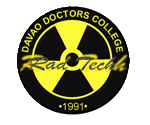Log in
Similar topics
Latest topics
» Anniversary of the Discovery of X-Rayby Admin Sat Nov 05, 2011 10:51 am
» First time members click here to join the fun
by Samjaypineda Fri Nov 04, 2011 10:40 pm
» RADICAL:THE COMIC SERIES
by muyco Tue Aug 16, 2011 1:35 pm
» EdmefoWkes
by Guest Tue Aug 02, 2011 4:52 am
» RT Day with other RT School ( s)
by Polon PearL Thu Jul 07, 2011 9:16 pm
Who is online?
In total there is 1 user online :: 0 Registered, 0 Hidden and 1 Guest None
Most users ever online was 82 on Mon May 31, 2021 1:28 pm
Finals Topic 3-1
5 posters
Page 1 of 1
 Finals Topic 3-1
Finals Topic 3-1

 Computed Tomography Scanner (CT Scan)
Computed Tomography Scanner (CT Scan)Computed tomography (CT) is a medical imaging method employing tomography created by computer processing. It is used to generate a three-dimensional image.
Three-Dimensional Image
Three-Dimensional Image
Terminology
The word "tomography" is derived from the Greek tomos (slice) and graphein (to write). Computed tomography was originally known as the "EMI scan" as it was developed at a research branch of EMI.
History
1970-72 – Godfrey Hounsfield – a senior research scientist [Engineer] first demonstrated the process of the scanner. The process of using the calculated Hounsfield (HU) units to make an image.
Sir Godfrey Hounsfield
Principles of Operation
Because of the superimposition of the anatomical structures of the conventional radiographic technique, a CT image is formed.
X-ray Image (Chest)
CT Scan Image (Chest)
Principles of Operation
A CT image is formed by scanning a cross section of the body with a narrow beam and measure the transmitted radiation through a detector. The detector adds all of the energy from the transmitted rays, which the information is in numerical form and must be processed by a computer and display the image on the monitor.
Components
Principles of Operation
The computer reconstruction of the cross-sectional anatomy is accomplished with mathematic equations adapted for computer processing called Algorithms.
Image Characteristic:
Image Matrix – (matrix-Array of numbers in rows and columns.)
Image Characteristic:
A CT scan image format consist of many cells, each assigned a number and display as density or brightness level on the video monitor.
Image Characteristic:
Each cell of information is a pixel (Picture Element), and the numerical information contained in each pixel is a CT number or Hounsfield unit.
Image Characteristic:
A pixel is a two dimensional representation of corresponding tissue volume.
Tissue volume is known as voxel (volume element) determined by the product of the pixel size and thickness.
CT numbers
CT numbers is the level of brightness on the photographic image as a level of density.
CT procedures:
CT scanning of the head is typically used to detect bleeding, brain injury and skull fractures
CT procedures:
CT can be used for detecting both acute and chronic changes in the lung parenchyma.
CT procedures:
CT is a sensitive method for diagnosis of abdominal diseases.
Advantages over traditional radiography
First, CT completely eliminates the superimposition of images of structures outside the area of interest.
Second, because of the inherent high-contrast resolution of CT.
Advantages over traditional radiography
Third, data from a single CT imaging procedure consisting of either multiple contiguous or one helical scan can be viewed as images in the axial, coronal, or sagittal planes, depending on the diagnostic task. This is referred to as multiplanar reformatted imaging.

Joshua- Posts : 9
Join date : 2009-08-19
Age : 45
 Re: Finals Topic 3-1
Re: Finals Topic 3-1
lamat sir! ^_^ sooo gud soo fast!

Mr. Calzo- Posts : 2
Join date : 2009-09-14
Location : Davao City
 Re: Finals Topic 3-1
Re: Finals Topic 3-1










merry christmas in advance sir!.. hahaha.. thnx!
( grades na lng ang gift sir!.. hakhak.)

roybirrey- Posts : 2
Join date : 2009-09-23
Location : TORRES!.. hahaha..
 Re: Finals Topic 3-1
Re: Finals Topic 3-1
 thank you sir josh[wow][/wow]
thank you sir josh[wow][/wow]
sarim kuran- Posts : 1
Join date : 2009-10-13
Age : 34
Location : davao city,midsayap, north cotabato
Page 1 of 1
Permissions in this forum:
You cannot reply to topics in this forum